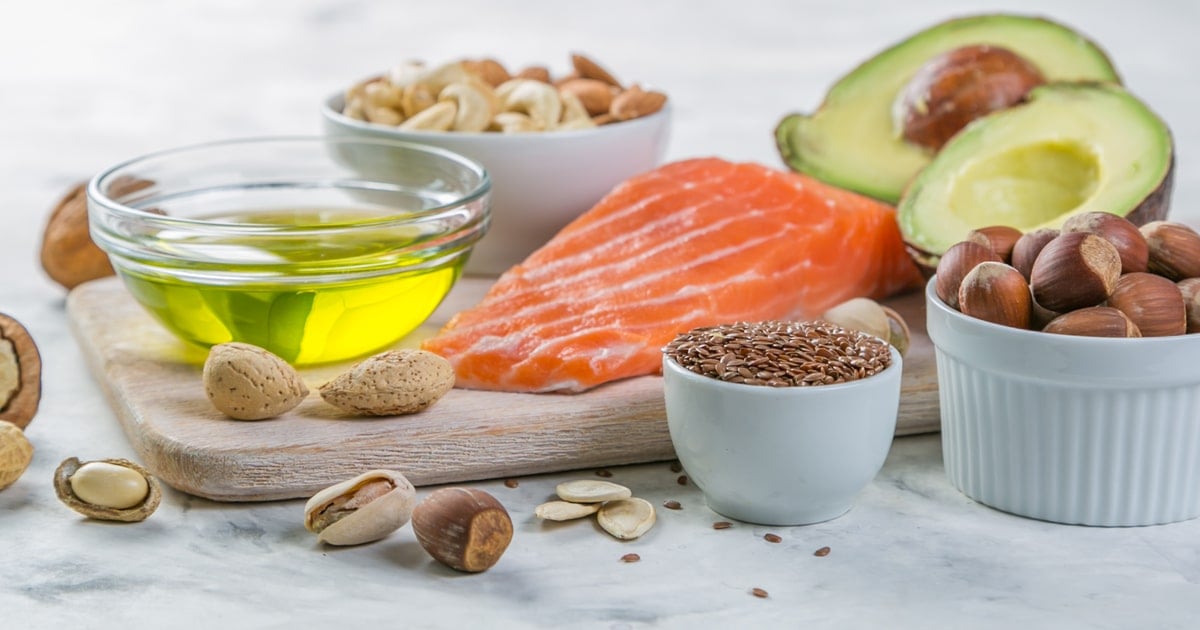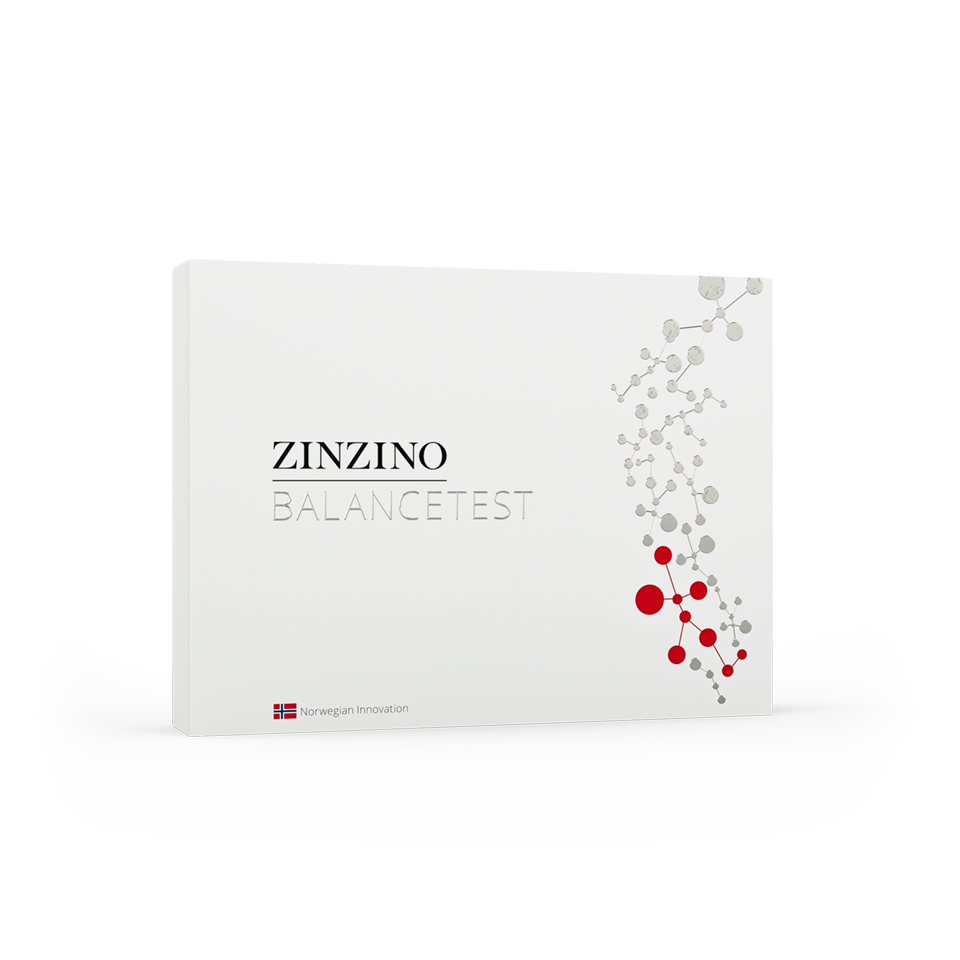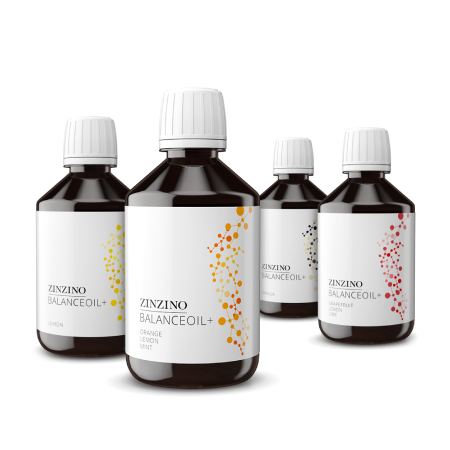Tanja Kinne
Zinzino Customer
Welcome! I have had great experiences with my products, and I think you'll love them too. Let me know what you think!
The Omega-6 to Omega-3 ratio and why it's important for your health

The Omega-6 to Omega-3 ratio and why it’s essential to re-balance for optimal health
In today’s modern world, we eat differently than we did in the early 1900s. Fast food wasn’t on the menu, nor was highly processed products high in salt, sugar, and Omega-6.
But even if you cook your own food, the ingredients are unfortunately not of the same quality anymore. Meat tends to come mainly from animals being fed inside a barn with feed instead of eating grass in the open fields and fish like salmon are farmed in closed basins and fed with fishmeal instead eating algae in the deep seas. This has a huge impact on the nutritional values in the food and thus in our cells, tissues and our bodies.
The Omega 6:3 ratio
We need Omega-3 and Omega-6 in our diet but a specific ratio of the two is the most crucial aspect – and 95% of people are at risk of an imbalance. Those who don’t take an Omega-3 supplement can be out of balance with a ratio of up to 25:1.
The results show that we’re not consuming enough Omega-3’s on our diet. Science recommends a 3:1 balance between essential fatty acids Omega-6 and Omega-3.
Zinzino’s Omega-6 and Omega-3 BalanceTest
Zinzino’s BalanceTest is an easy self-test for analyzing the fatty acids in your blood which is a reflection of the fat in the food you eat. The BalanceTest is a dried blood spot test (DBS) which is scientifically proven to be as accurate as a venous blood sample, when fatty acids are to be analyzed.
All it requires are a few drops of blood from the fingertip on a Whatman filter paper and it takes less than a minute to complete. VITAS Analytical Services1 will anonymously analyze content of 11 fatty acids2, which together contributes to approximately 98% of the fatty acids in the blood. The fatty acids include saturated, monounsaturated (omega-9) and polyunsaturated (omega-6 and omega-3) fatty acids. The result is then displayed, after about 20 days, on the website zinzinotest.com where information is given about the Omega-6:3 balance, the Omega-3 content, a fatty acids protection profile and more.
Polyphenol Omega-3 BalanceOil+
BalanceOil+ is an all-natural Polyphenol Omega Balance food supplement high in olive polyphenols, Omega-33 and vitamin D3. It safely adjusts and maintains EPA + DHA levels and the Omega-6:3 ratio in your body while protecting your cells from oxidation4. It contains a premium blend of oils derived from wild-caught small fish and pre-harvest extra virgin olive oil.
All-Natural Ingredients
The fish oil in Zinzino’s BalanceOil+ is primarily derived from short-lived, small pelagic fish such as sardines and anchovies and the fish oils are derived from whole, unprocessed fish.
We also use cold-pressed extra virgin olive oil. The Spanish Picual olive is selected due to its richness in Omega-9 and very high antioxidant content.
The olives are of pre-harvest quality and in the process the stones are taken out and only the fruits are cold-pressed, resulting in an extra virgin oil, rich in Omega-9 (Oleic acid)5 with very high content of antioxidants called polyphenols (above 750 mg/kg)6, both with several beneficial effects5. The polyphenols protect the BalanceOil+ in the bottle but even more importantly, also your cells4.
BalanceOil+ contains vitamin D3. We use a natural vitamin D3 (cholecalciferol) made from lanolin. Lanolin is a naturally occurring fat found in sheep’s wool. The vitamin D3 is made by dissolving a precursor to vitamin D3 from the lanolin. It is then chemically altered and activated by exposure to ultraviolet (UV) light. The chemical process is comparable to the process which occurs in the human skin when it produces vitamin D3.
Our BalanceOil+ products also contain only all-natural flavors

Key benefits of Zinzino Polyphenol Omega-3 BalanceOil+
- Contributes to normal brain function7 since the daily dosage contains 700 mg DHA
- Contributes to normal heart function8 since the daily dosage contains 1300 mg EPA and 700 mg DHA
- Contributes to a normal immune system9 since the daily dosage contains 20 μg Vitamin D3
- Helps maintain good levels of EPA and DHA in your body
- Helps maintain optimal Omega-6:3 levels in your body
- Helps maintain polyphenol levels in your body to protect blood lipids from oxidative stress4
- Supports healthy and normal eye function since it contains 700 mg DHA10
- Contributes to normal bones11, muscle function12, normal teeth13 and cell division14 since the daily dosage contains 20 μg Vitamin D3
- Supports normal blood triglyceride levels15, normal blood pressure16 and normal blood calcium levels17
After following our personalized health plan with BalanceOil+ over 4 months, re-test and discover your new number. 95% of those who take Zinzino Balance products have a ratio of near 3:1 after 120 days.
* These statements have not been evaluated by the Food and Drug Administration. This product is not intended to diagnose, treat, cure, or prevent any disease.
2. The 11 fatty acids are:
The 11 fatty acids are: Palmitic acid (PA), Stearic acid (SA), Oleic acid (OA), Linoleic (LA), Alpha-Linolenic acid (ALA), Gamma-linolenic acid (GLA), dihomoGamma-linolenic acid (DHGLA), Arachidonic acid (AA), Eicosapentaenoic acid (EPA), Docosapentaenoic acid (DPA), Docosahexae- noic acid (DHA).
4. Olive oil polyphenols
Olive oil polyphenols contribute to the protection of blood lipids from oxidative stress. Replacing saturated fats in the diet with unsaturated fats contributes to the maintenance of normal blood cholesterol levels. Oleic acid is an unsaturated fat. The claim may be used only for olive oil which contains at least 5 mg of hydroxytyrosol and its derivatives (e.g. oleuropein complex and tyrosol) per 20 g of olive oil. In order to bear the claim, information shall be given to the consumer that the beneficial effect is obtained with a daily intake of 20 g of olive oil.
7. DHA contributes to the maintenance of normal brain
DHA contributes to the maintenance of normal brain function. The claim may be used only for food which contains at least 40 mg of DHA per 100 g and per 100 kcal. In order to bear the claim, information shall be given to the consumer that the beneficial effect is obtained with a daily intake of 250 mg of DHA. Docosahexaenoic acid (DHA) maternal intake contributes to the normal brain development of the fetus and breastfed infants. Information shall be given to pregnant and lactating women that the beneficial effect is obtained with a daily intake of 200 mg of DHA in addition to the recommended daily intake of Omega-3 fatty acids for adults, i.e. 250 mg DHA and EPA. The claim may be used only for food which provides a daily intake of at least 200 mg DHA.
8. DHA and EPA contribute to the normal function of the heart
DHA and EPA contribute to the normal function of the heart. The claim may be used only for food which is at least a source of EPA and DHA as referred to in the claim SOURCE OF Omega-3 FATTY ACIDS as listed in the Annex to Regulation (EC) No 1924/2006. In order to bear the claim, information shall be given to the consumer that the beneficial effect is obtained with a daily intake of 250 mg of EPA and DHA.
10. DHA contributes to the maintenance of normal vision
DHA contributes to the maintenance of normal vision. The claim may be used only for food which contains at least 40 mg of DHA per 100 g and per 100 kcal. In order to bear the claim, information shall be given to the consumer that the beneficial effect is obtained with a daily intake of 250 mg of DHA. Docosahexaenoic acid (DHA) intake contributes to the normal visual development of infants up to 12 months of age. Information shall be given to the consumer that the beneficial effect is obtained with a daily intake of 100 mg of DHA. When the claim is used on follow-on formula, the food shall contain at least 0.3% of the total fatty acids as DHA.
15. DHA and EPA contribute to the maintenance of normal blood pressure
DHA and EPA contribute to the maintenance of normal blood pressure. The claim may be used only for food which provides a daily intake of 3 g of EPA and DHA. In order to bear the claim, information shall be given to the consumer that the beneficial effect is obtained with a daily intake of 3 g of EPA and DHA. When the claim is used on food supplements and/or fortified foods, information shall also be given to consumers not to exceed a supplemental daily intake of 5 g of EPA and DHA combined.
16. DHA and EPA contribute to the maintenance of normal blood
DHA and EPA contribute to the maintenance of normal blood triglyceride levels. The claim may be used only for food which provides a daily intake of 2 g of EPA and DHA. In order to bear the claim, information shall be given to the consumer that the beneficial effect is obtained with a daily intake of 2 g of EPA and DHA. When the claim is used on food supplements and/or fortified foods, infor- mation shall also be given to consumers not to exceed a supplemental daily intake of 5 g of EPA and DHA combined. DHA contributes to the maintenance of normal blood triglyceride levels. The claim may be used only for food which provides a daily intake of 2 g of DHA and which contains DHA in combination with eicosapentaenoic acid (EPA). In order to bear the claim, information shall be given to the consumer that the beneficial effect is obtained with a daily intake of 2 g of DHA. When the claim is used on food supplements and/or fortified foods, information shall also be given to consumers not to exceed a supplemental daily intake of 5 g of EPA and DHA combined.



Share this page
Or copy link